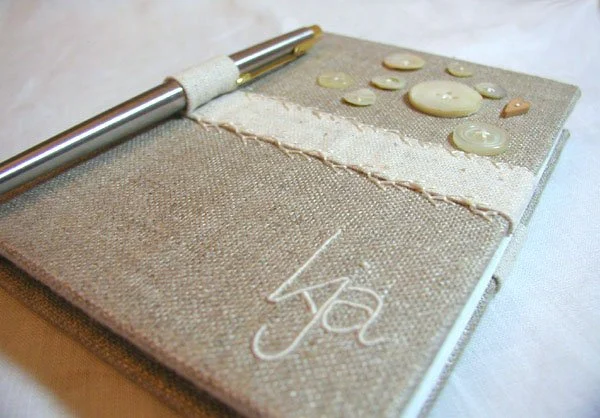The Basics:
Name:
Mara Warwick
Zooming in from:
Currently, Beijing. I took my first class with Kelley while living in Tanzania, zooming in from Dar es Salaam. Over the years I've also zoomed in from my home in Cornwall, as well as other random places like Paris airport!
At:
Saturday evening (in Asia)
On Instagram: @36hoursinaday
Mara’s Story:
Why do you enjoy hand embroidery?
I love embroidery’s endless opportunities for creativity, experimentation, and learning. I have realized over the years that I don’t need to be skilled at all the techniques, and I certainly don’t have to be precise all the time to create beautiful pieces that are expressions of who I am and my life experiences.
Embroidery traditions differ from country to country and yet the use of embroidery to embellish and mend, and as a cultural expression, is universal. My day job (which has nothing to do with textiles) has taken me to five continents. As a textile lover at heart, my passion has provided a unique window on the culture of the countries I have lived in, especially the traditions of women. I like to explore all sorts of quilting, embroidery and sewing techniques. Working in western China and Türkiye, I learnt about the journey of the tambour technique along the ancient Silk Road from Asia to Europe. Recently I have enjoyed learning the Korean jogakbo patchwork technique and have used it in my own way, making a quilt out of silk kantha scraps from India. During my travels I have hunted down handmade needles from the last needle craftswoman in Japan just before she retired, learnt about indigo dyeing of natural fabrics such as ramie in China, seen cotton weaving in Tanzania, made an enduring friendship with an award-winning Baltimore album quilter in Maryland, purchased an antique Japanese boro coverlet at a street market in Paris, discovered the embroidery techniques of women in the conflict affected region of Mindanao in the southern Philippines, and heard the stories of oya – needle lace flowers that were traditionally used to adorn women’s head scarves to convey messages about a woman’s emotions, in Türkiye. In my experience, the world of textiles is endlessly fascinating and surprisingly accessible.
I marvel at the historic English embroidery pieces at the V&A and love to learn traditional English embroidery techniques such as those I have learnt from Kelley. But I equally enjoy more playful, less precise embroidery practices. My summer holiday luggage usually includes a box of mixed threads and fabric from my stash – a palette of color with only a vague plan and limitless possibilities. This summer I am making pages for a fabric book – the background of each page is vintage indigo dyed fabric from China onto which I kantha smaller indigo fabric scraps for texture. The main embellishments are a mixture of applique, embroidery, fabric manipulation, and English paper piecing in bright jewel colored fabric and threads. I stitch whatever pops into my head as I pick up my needle. I’m using beads, sequins, ribbons, trinkets, and a wide range of threads – even leftover knitting yarn. It is wild and fun, there are no rules and no plan. The results of these summer adventures are often some of my most interesting work. As this summer draws to a close, I will be working again on Kelley’s gingerbread house advent box and very soon I will start hand quilting a quilt I have made from Liberty scraps and Japanese chambray fabric. There’s endless variety in what I make. That’s what I enjoy most about hand embroidery and textiles.
What’s the first thing you can remember stitching?
A little felt owl for my mother whose nickname (in her native language) was “Little Owl”. She kept the owl her whole life and it came back to me a few years ago when she passed away. I don’t remember exactly how old I was when I stitched it - probably around 5 or 6 years I think.
What are you currently working on?
Several projects, as is my way: in addition to the projects I’ve already mentioned, I’m also working on a long term project that has taken me several years already. It is a fabric book that will showcase embroidery made by several generations of women in my family, including my great grandmother, two grandmothers, a great aunt, my mother, sister, my two daughters, and, of course, me.
What is on your wishlist of stitching projects?
Very hard to say! So many things. I’d love to do another stumpwork project because I love the challenge of the construction (I am a trained engineer, after all.). Maybe there will even be a knot garden in my future!
Learning at the Stitch Sanctuary
What brought you to Kelley’s online class(es) in the first place?
It was 2020 and I had just moved to Tanzania (for work) with only a suitcase of stitching materials and the arrival of the container with our furniture and the contents of my sewing room still months away. COVID was all around so I was at home a lot. I noticed that RSN classes were going online, and I was immediately drawn to Kelley's Heirloom Sampler class. Although I already knew quite a few embroidery basics at that time, I thought the class would be a good way to spend time with like-minded embroiderers while learning new techniques. And the class only needed stranded floss (which I had in my suitcase) and some linen (which I hadn't brought with me, but I managed to get sent to Tanzania from Lithuania, even when most international postal routes were closed!). That class was the start of many friendships for me and several of us still meet regularly by zoom for stitching and chatting (often more chatting than stitching).
What online cours(es) have you taken with Kelley?
Traditional Stitch Sampler, Stumpwork Seasons Sampler, Sugar & Spice Advent Calendar Box
How do you find the online learning experience with her?
I really enjoy Kelley’s creativity and teaching skills, as well as her low-key approach. Her style suits students like me who want to learn new skills but primarily stitch for fun. Kelley uses an effective combination of live classes, a Whatsapp group for sharing photos of ongoing work and receiving feedback, copious class handouts, and a Padlet page which keeps us organized. Each course provides a thorough grounding in all the relevant techniques in such a way that we can apply them ourselves to our own projects immediately. My stitching has improved over the years under Kelley’s teaching. When I finished the (epic) stumpwork sampler I was amazed at how straightforward some of the more complex techniques such as needle lace seemed compared to the start of the class! My skills had grown and so had my confidence. What I love most about Kelley’s sampler classes is that she encourages us to design as much (or as little) as we want. While design seems daunting at first, I find this is the most satisfying aspect as it makes the final product my own. Kelley provides a lot of guidance throughout the design stage – she is always encouraging, nudges us in the right direction, and has an amazing depth of knowledge and experience that means she can help students think through all sorts of design and technical issues to bring their imagination to life. (And she can even identify over zoom when a stumpwork figure’s hand has been attached back to front despite the stitcher being adamant that it is on the right way!)
What would you say to someone thinking of booking onto a Stitch Sanctuary class for the first time?
Jump in! Kelley will help you build your skills, and most importantly, your confidence and creativity. You will not just learn to make one project; you will take away skills that will help you translate your own imagination into pieces that will convey who you are to those who see and experience them.
A Unique Gallery of Work
Below is a glimpse of Mara’s work—enjoy a virtual tour of her one-woman show, and let inspiration meet you at every turn.

Wenchuan Earthquake
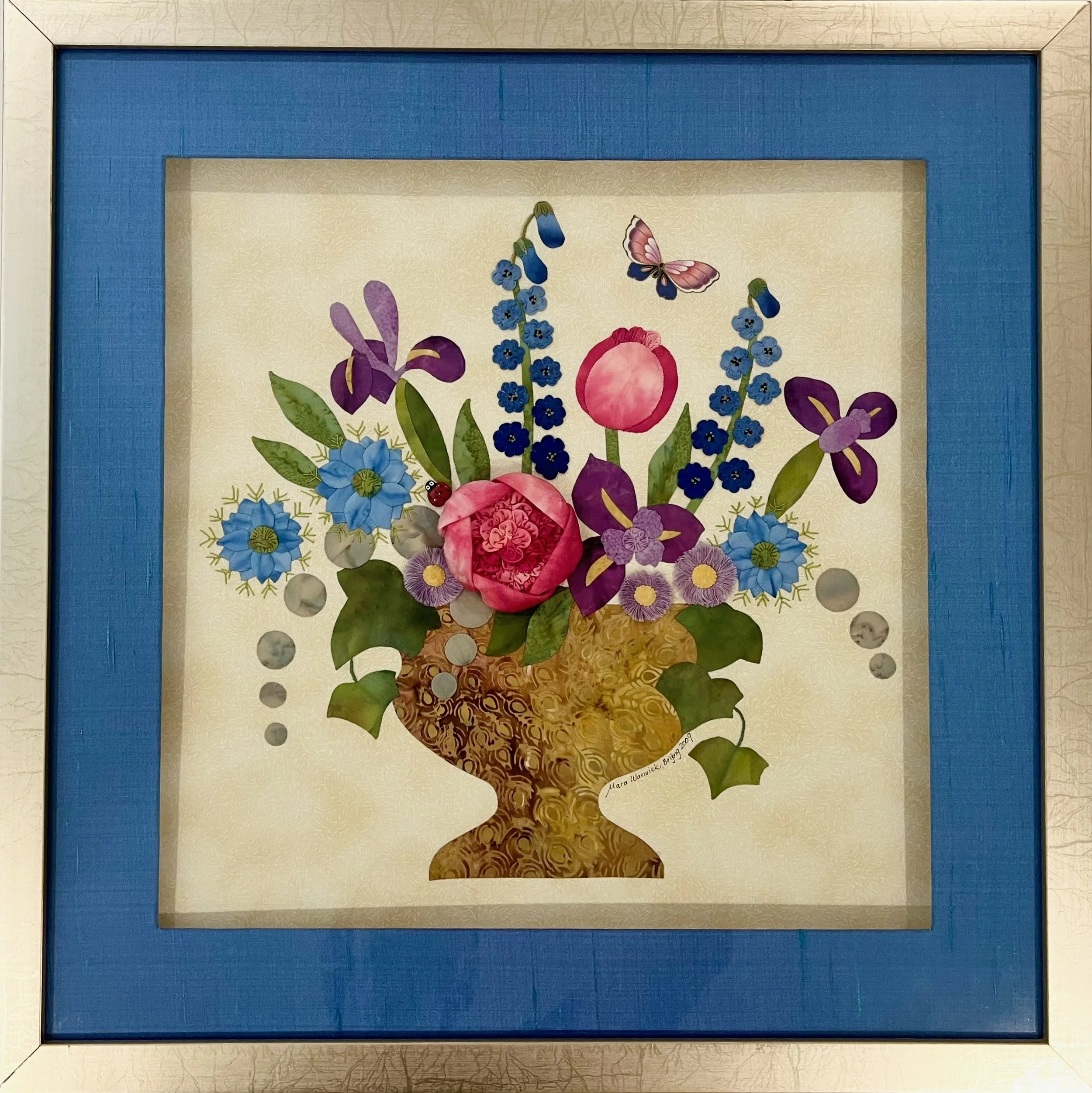
Appliqué Flowers
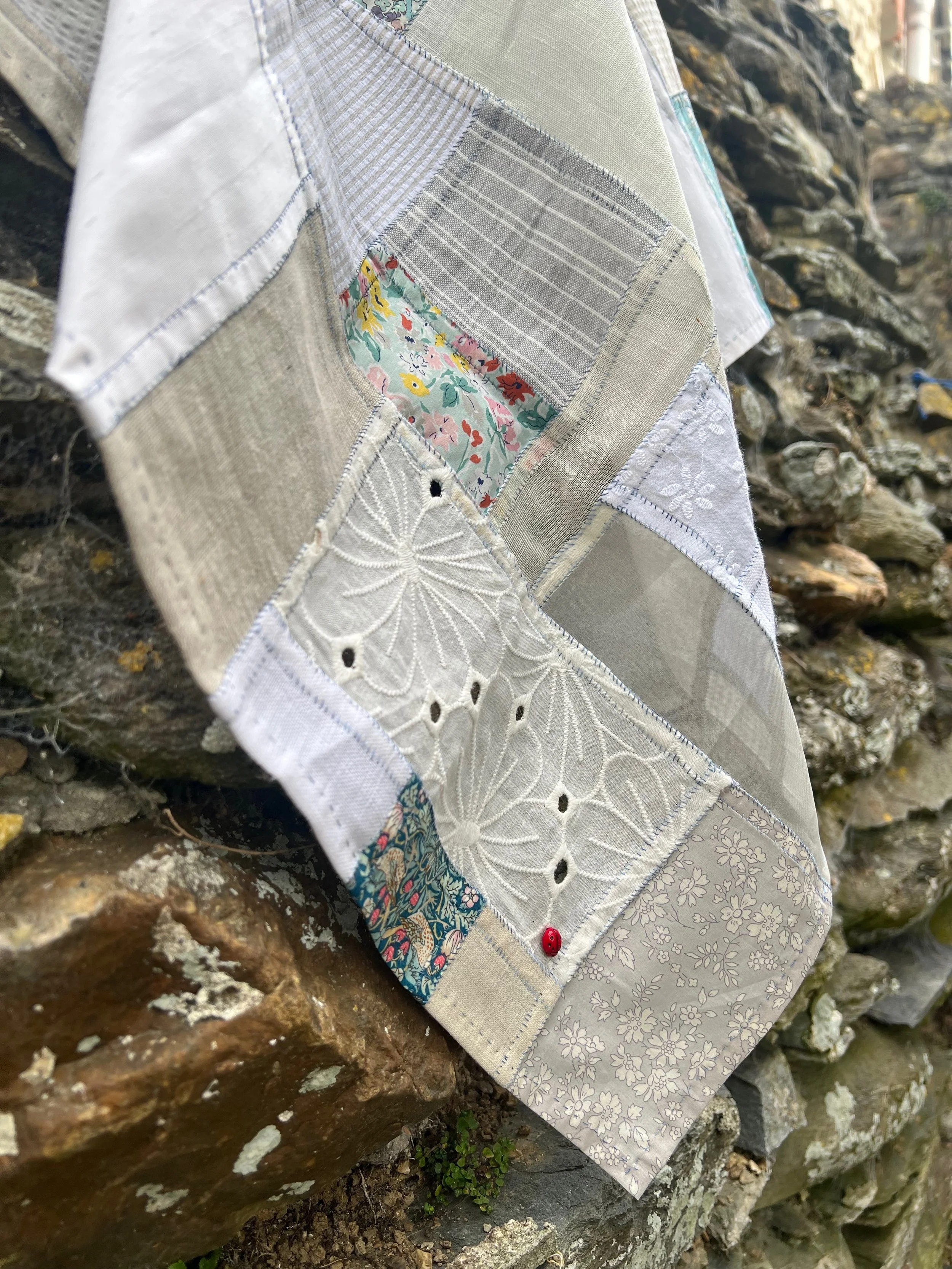
Korean Bojagi
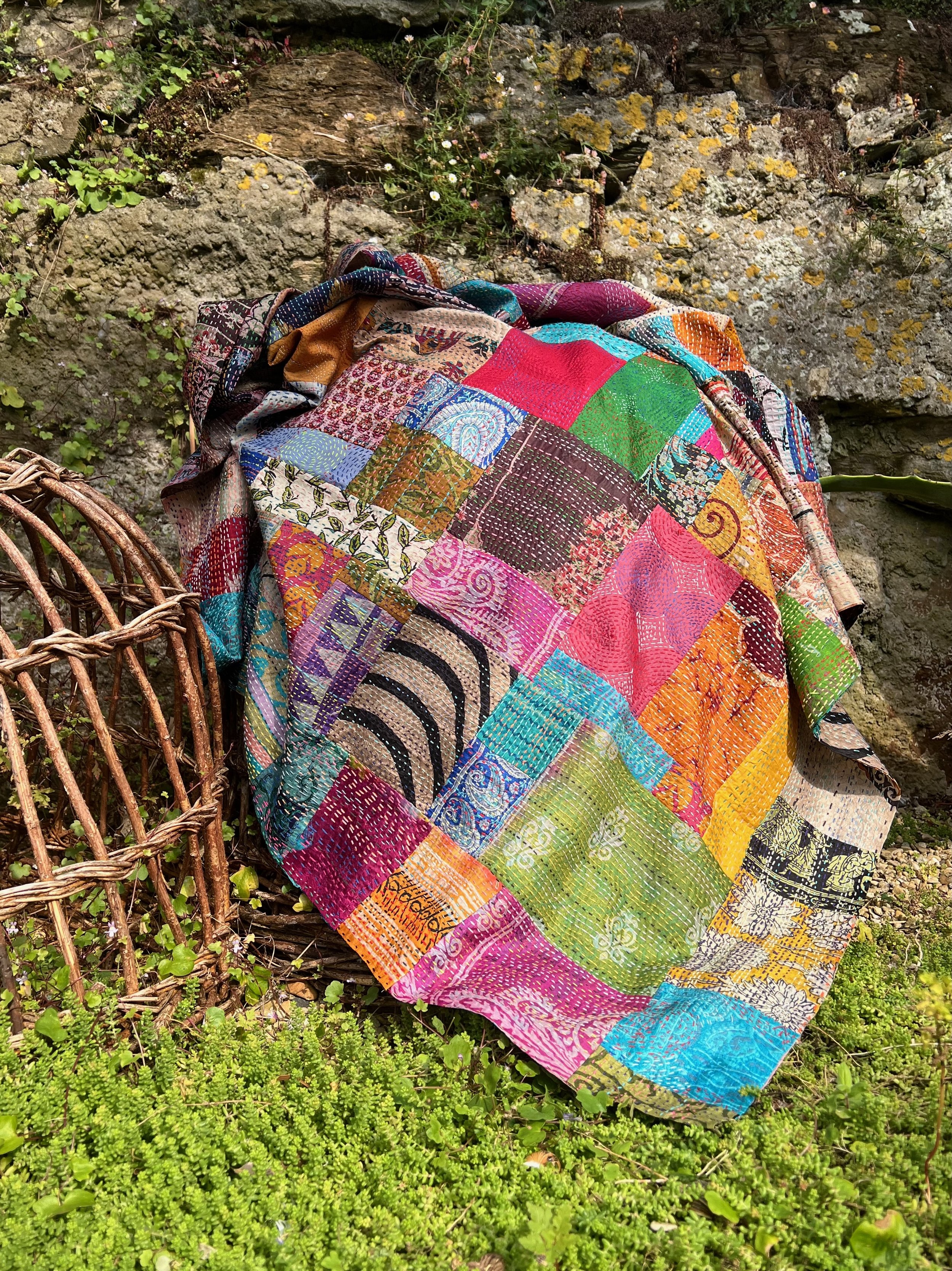
Indian Silk Kantha Using Korean Jogakbo

Summer 2023 Stitching

Temperature Quilt 2024
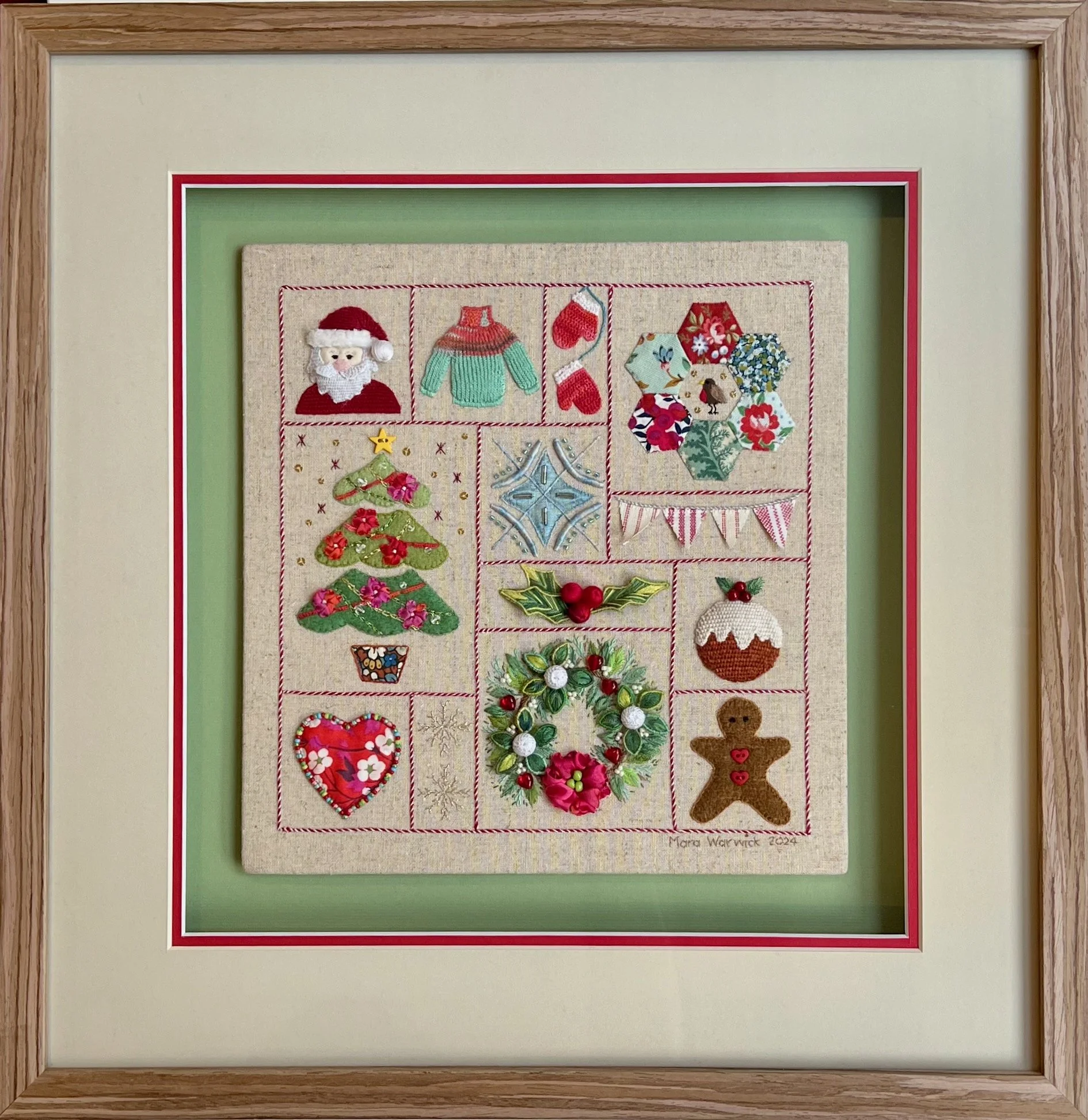
Christmas Stumpwork
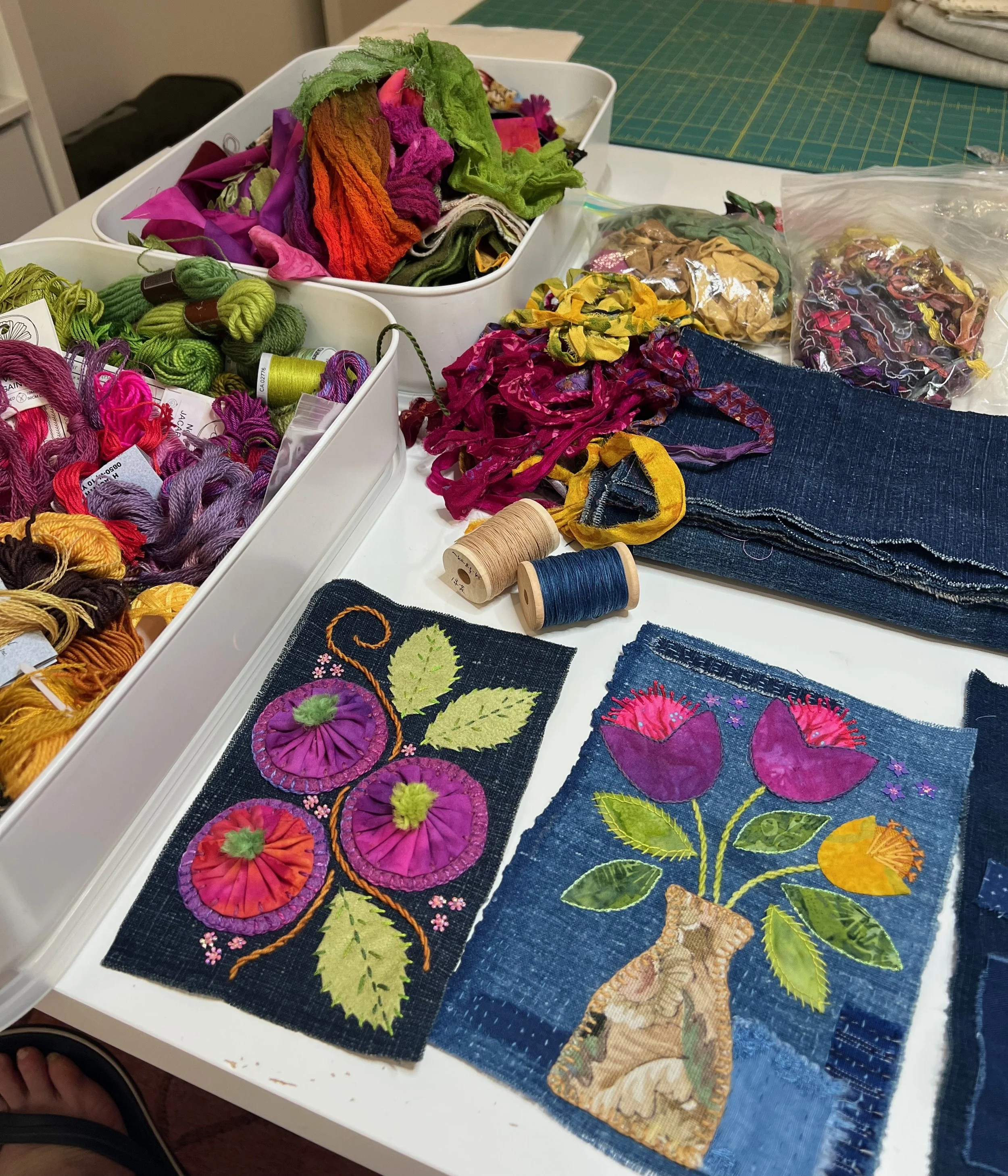
Summer 2025 Stitching
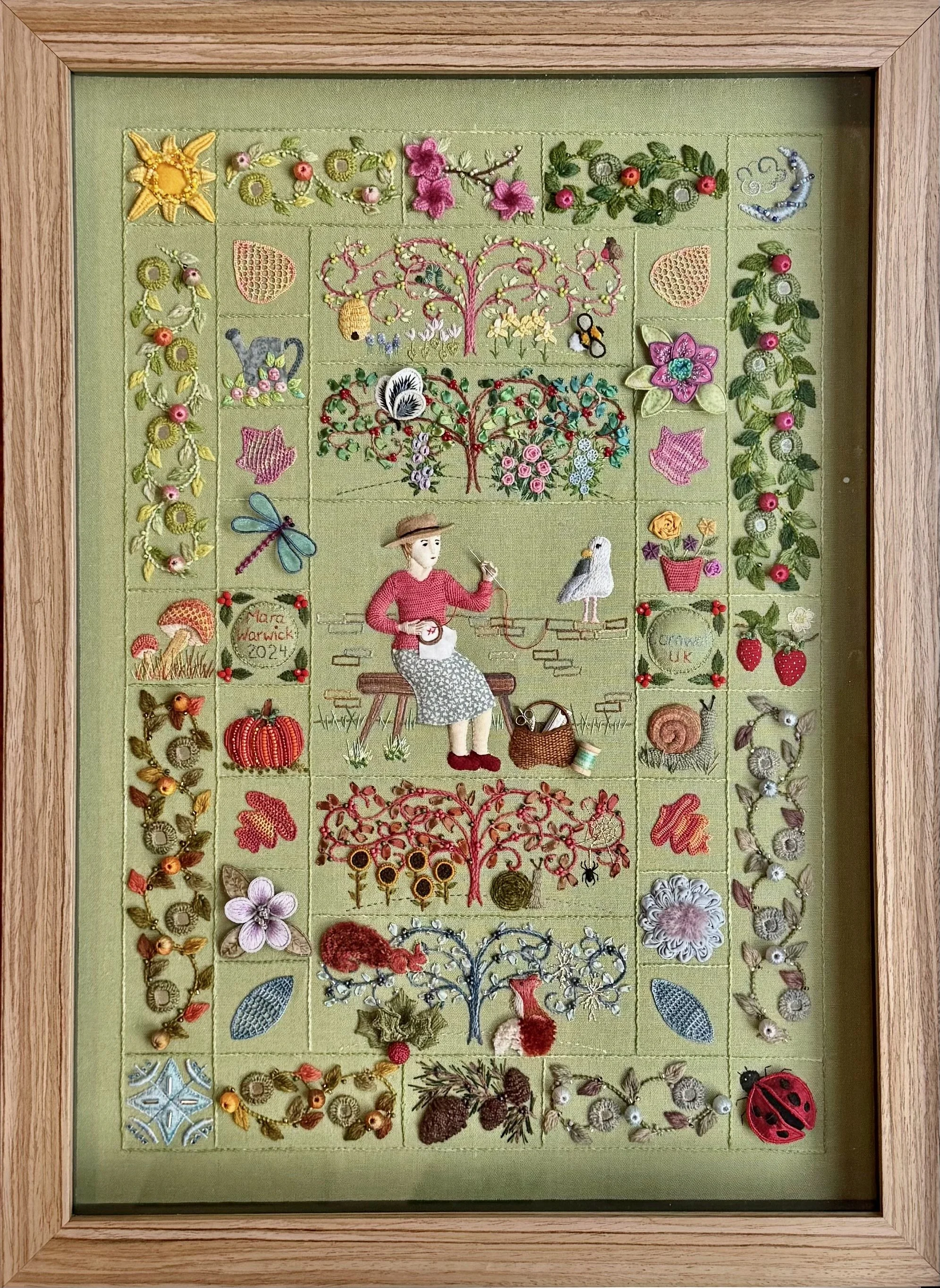
Stumpwork Season Sampler
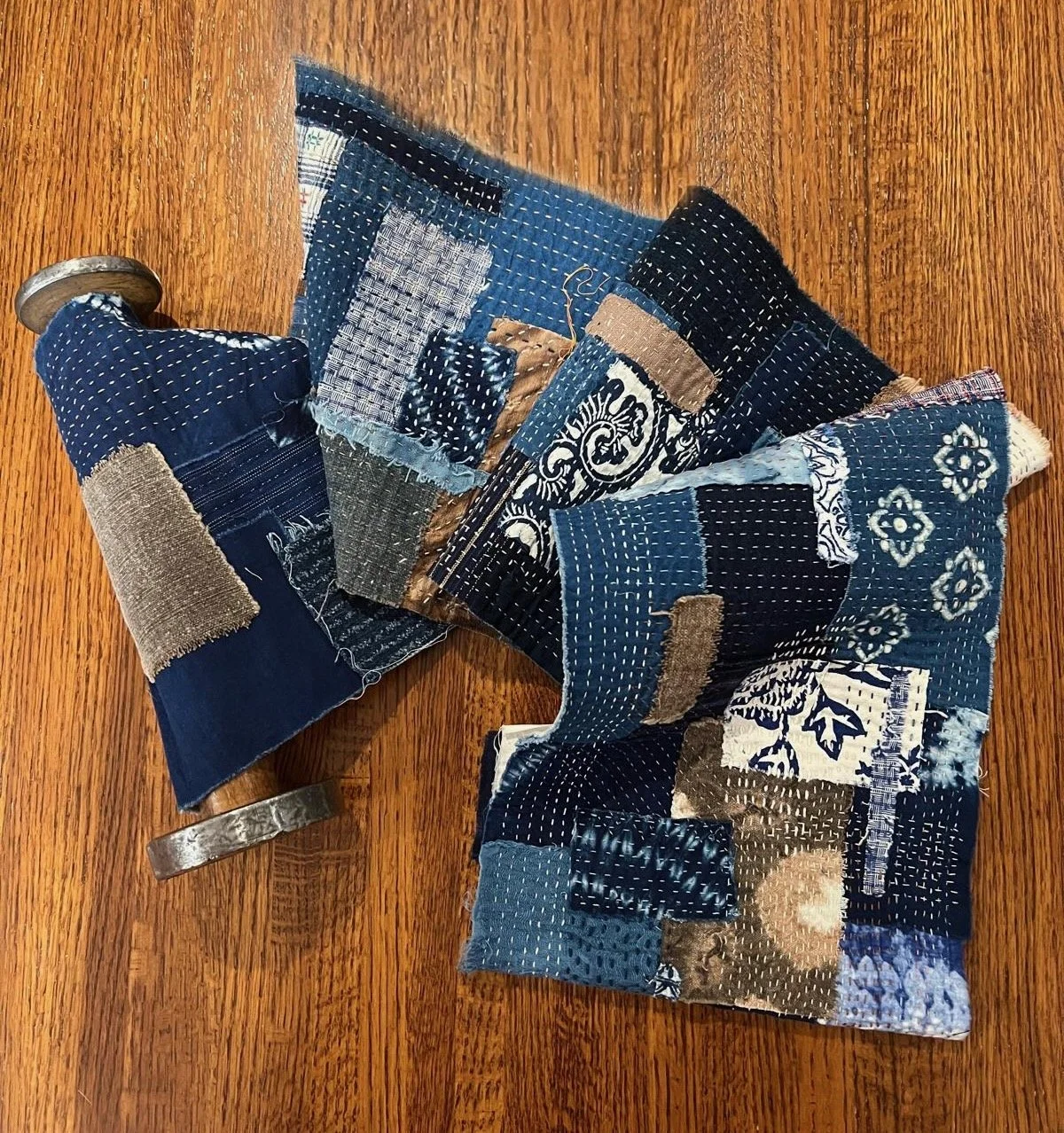
Boro Scroll
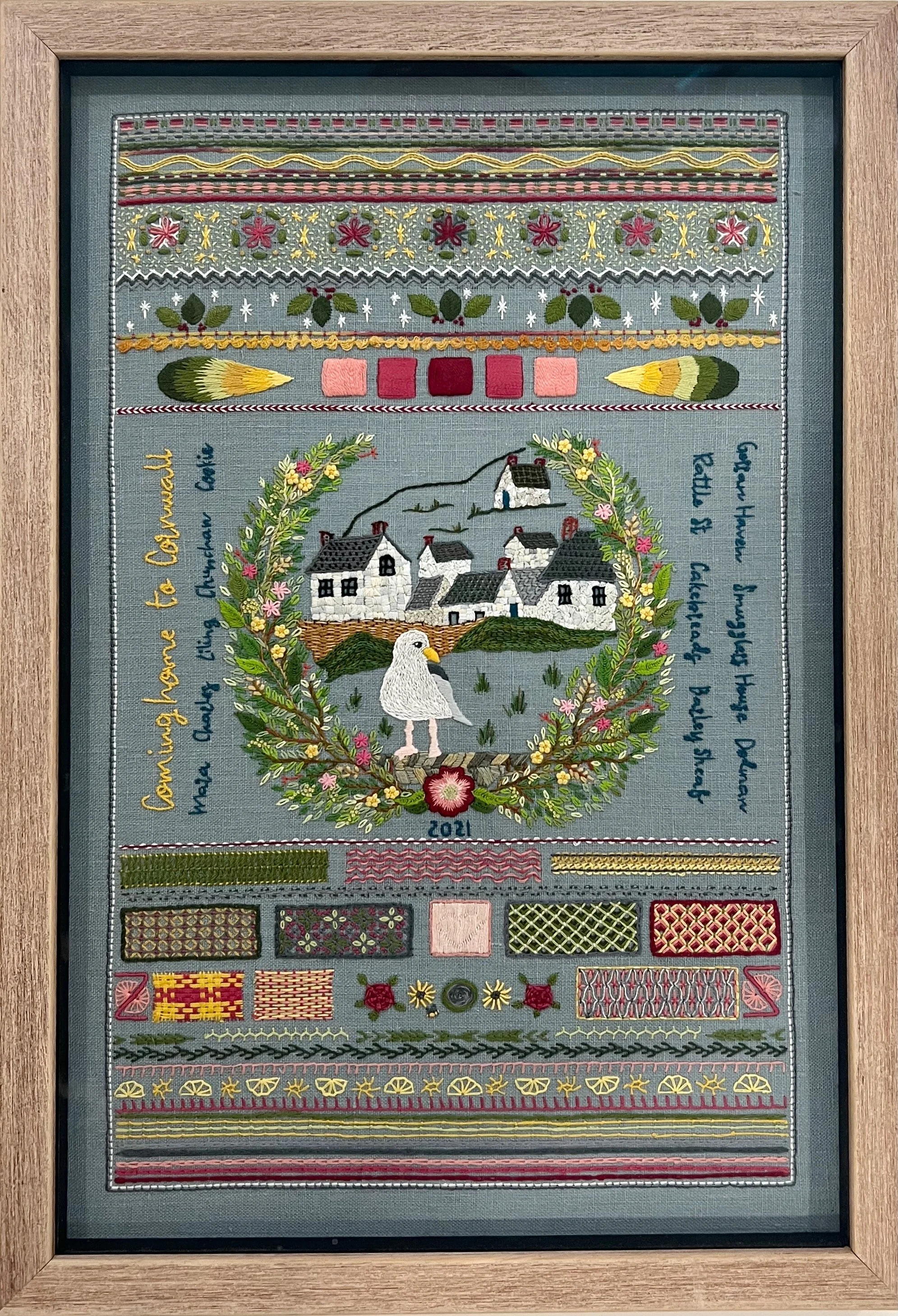
Heirloom Sampler



